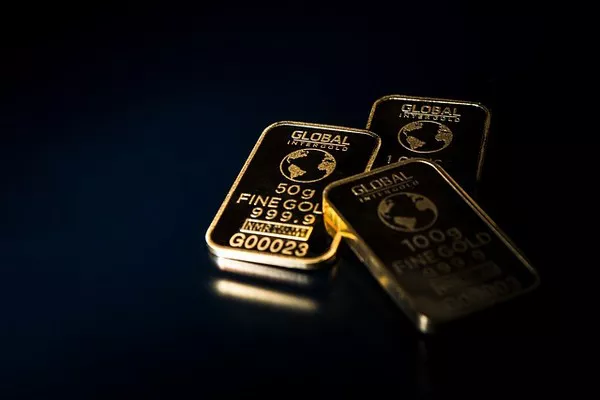The gold dollar coin has intrigued collectors, historians, and the general public for many years. With its distinct color and historical significance, questions often arise about its composition and authenticity. This article delves into the nature of the gold dollar coin, exploring whether it is made of real gold, its historical context, and its relevance in today’s numismatic world.
Historical Context of the Gold Dollar Coin
The gold dollar coin, officially known as the Liberty Head or Indian Head gold dollar, was first minted in the United States in 1849. This coin emerged during the California Gold Rush, a period of great economic expansion and opportunity. The introduction of the gold dollar coin was part of a broader effort to standardize and streamline American currency, leveraging the newfound abundance of gold.
The original design featured a small, gold coin with a face value of one dollar, which was a significant sum at the time. The Liberty Head gold dollar was minted from 1849 to 1854, after which it was succeeded by the Indian Head design, which continued until 1889. Both versions of the coin were part of the U.S. Mint’s strategy to incorporate gold into everyday transactions.
Composition of the Gold Dollar Coin
To understand whether the gold dollar coin is real gold, it’s essential to examine its composition. The Liberty Head and Indian Head gold dollar coins were primarily made from an alloy of gold and copper, not pure gold. The standard composition for these coins was:
- Gold Content: 90% gold
- Copper Content: 10% copper
This alloy was chosen to provide the coin with the durability required for everyday use while retaining the valuable properties of gold. The gold dollar coin weighed approximately 1.67 grams, with a diameter of 13.92 mm and a thickness of 1.04 mm. The choice of alloy allowed for a balance between the coin’s value and practical usability.
The Nature of “Real Gold” in Coins
When people refer to a coin being made of “real gold,” they typically mean that it contains a significant proportion of gold, as opposed to being merely gold-plated or gold-colored. In the case of the gold dollar coin, the 90% gold content is substantial, making it a genuine gold coin.
However, it is important to note that the gold dollar coin is not made of pure gold (24-karat gold), which is 100% gold. The alloyed composition of the coin means that while it is indeed a real gold coin, it is not pure gold. Pure gold is more malleable and less durable than gold alloys, which is why alloys are often used for circulating currency.
Numismatic Value and Modern Relevance
While the gold dollar coin was originally intended for circulation, it has since gained significant numismatic value. Collectors highly value these coins for their historical significance, rarity, and the intrinsic value of their gold content.
The numismatic value of the gold dollar coin can far exceed its face value due to several factors:
Rarity: Many gold dollar coins were melted down or lost over time, making surviving specimens relatively rare.
Condition: Coins in pristine condition or those with unique features command higher prices among collectors.
Historical Significance: The gold dollar coin represents a fascinating period in American history, adding to its appeal.
Today, the gold dollar coin is primarily a collector’s item rather than a circulating currency. The value of these coins is influenced by both the market price of gold and the coin’s rarity and condition. As a result, prices can fluctuate based on various factors, including the broader gold market and the demand among collectors.
Comparing Gold Dollar Coins to Modern Gold Coins
Modern gold coins, such as the American Gold Eagle and the American Buffalo, differ significantly from the historic gold dollar coins. These contemporary coins are often made of pure gold (22-karat for the Gold Eagle and 24-karat for the Gold Buffalo) and are produced primarily for collectors and investors.
The American Gold Eagle, for instance, contains 91.67% gold, 3% silver, and 5.33% copper, while the American Gold Buffalo is made of 99.99% pure gold. These modern coins are produced with advanced minting techniques and are often considered a more secure investment in gold compared to historic coins.
Investment Considerations
For investors, the gold dollar coin offers a different proposition compared to modern gold bullion coins. While its intrinsic gold value is a factor, its primary appeal lies in its numismatic value and historical significance. Investors interested in gold for its commodity value may find modern bullion coins or gold bars to be more suitable.
However, collectors and enthusiasts may value the gold dollar coin not only for its gold content but also for its historical context and rarity. In this sense, the gold dollar coin serves as both a tangible connection to American history and a potential investment opportunity.
See Also What Happens to Gold Stocks in a Recession
Conclusion
In summary, the gold dollar coin is indeed made of real gold, specifically an alloy of 90% gold and 10% copper. While it is not pure gold, its gold content makes it a genuine gold coin. The coin’s historical significance and numismatic value add to its appeal among collectors and investors.
The gold dollar coin provides a fascinating glimpse into American monetary history and continues to be valued both for its gold content and its role in the evolution of American currency. Whether for investment or collection, the gold dollar coin remains a noteworthy piece of numismatic heritage.


